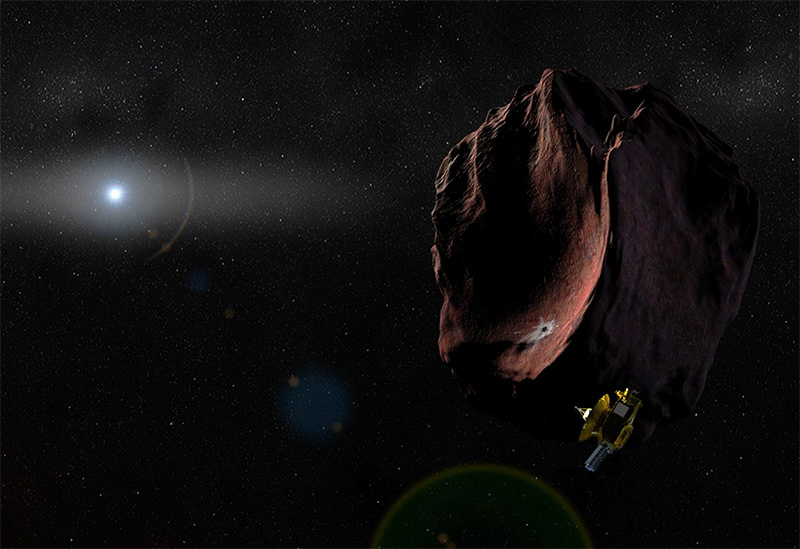
“All bound for Mu Mu Land” — The KLF, ‘Justified and Ancient’ (seems appropriate)
After visiting Pluto on July 14, 2015, NASA’s epic New Horizons mission soared into the great unknown, a.k.a. the Kuiper Belt. This strange region, which extends beyond Pluto’s orbit, is known to be populated with dwarf planets, comets, asteroids and junk that was left behind after the solar system’s formation, five billion years ago.
In an effort to better understand the solar system’s boondocks, New Horizons is on a trajectory that will create a second flyby opportunity. On New Year’s Day 2019, the spacecraft will buzz a mysterious object called 2014 MU69. But although we know this Kuiper Belt Object is out there, astronomers aren’t entirely sure what it is. And that’s a bit of a problem.
For two seconds on June 3, astronomers were presented with an opportunity to better observe MU69, but instead of clearing up its mystery the occultation event has created more questions than answers.
An occultation is when an object, like a distant asteroid, drifts in front of a background star. If astronomers time it perfectly, they can observe the star at the time of occultation in a bid to image the tiny shadow that will rapidly speed across our planet. And in the case of the June 3 event, dozens of mission team members and collaborators were ready and waiting along the predicted shadow track in South Africa and Argentina. In all, 100,000 images were taken of the star during the rapid occultation.
What they saw — or, indeed, didn’t see — is a bit of a conundrum.
“These data show that MU69 might not be as dark or as large as some expected,” said Marc Buie, a New Horizons science team member and occultation team leader from Southwest Research Institute (SwRI) in Boulder, Colo., in a statement.
Observations by the Hubble Space Telescope had previously estimated that MU69 is between 12- to 25-miles wide. That might be a pretty big overestimation by all accounts. And it may not be a single object at all.
“These results are telling us something really interesting,” said Alan Stern, New Horizons Principal Investigator also of SwRI. “The fact that we accomplished the occultation observations from every planned observing site but didn’t detect the object itself likely means that either MU69 is highly reflective and smaller than some expected, or it may be a binary or even a swarm of smaller bodies left from the time when the planets in our solar system formed.”
If it’s the latter, this could pose a problem for New Horizons.
Before the mission encountered Pluto in 2015, there was concern that the dwarf planet’s neighborhood might have been filled with debris. This concern was heightened after Pluto’s moons Styx and Kerberos were revealed by Hubble in 2011, only four years before New Horizons was set to barrel through the system. If there were more sub-resolution chunks near Pluto, they would have been regarded as collision risks.
Although New Horizons survived the Pluto encounter, if MU69 is a swarm of debris and not a solid object, mission scientists will have to assess the impact risk once again when New Horizons attempts its second flyby in 2019.
More occultations are forecast for July 10 and July 17, and NASA will also be flying its airborne observatory SOFIA through the occultation path on July 10 in hopes of better resolving MU69’s true nature.
So, as New Horizons speeds toward MU69, one of the most ancient objects in our sun’s domain, mystery and potential danger awaits.
